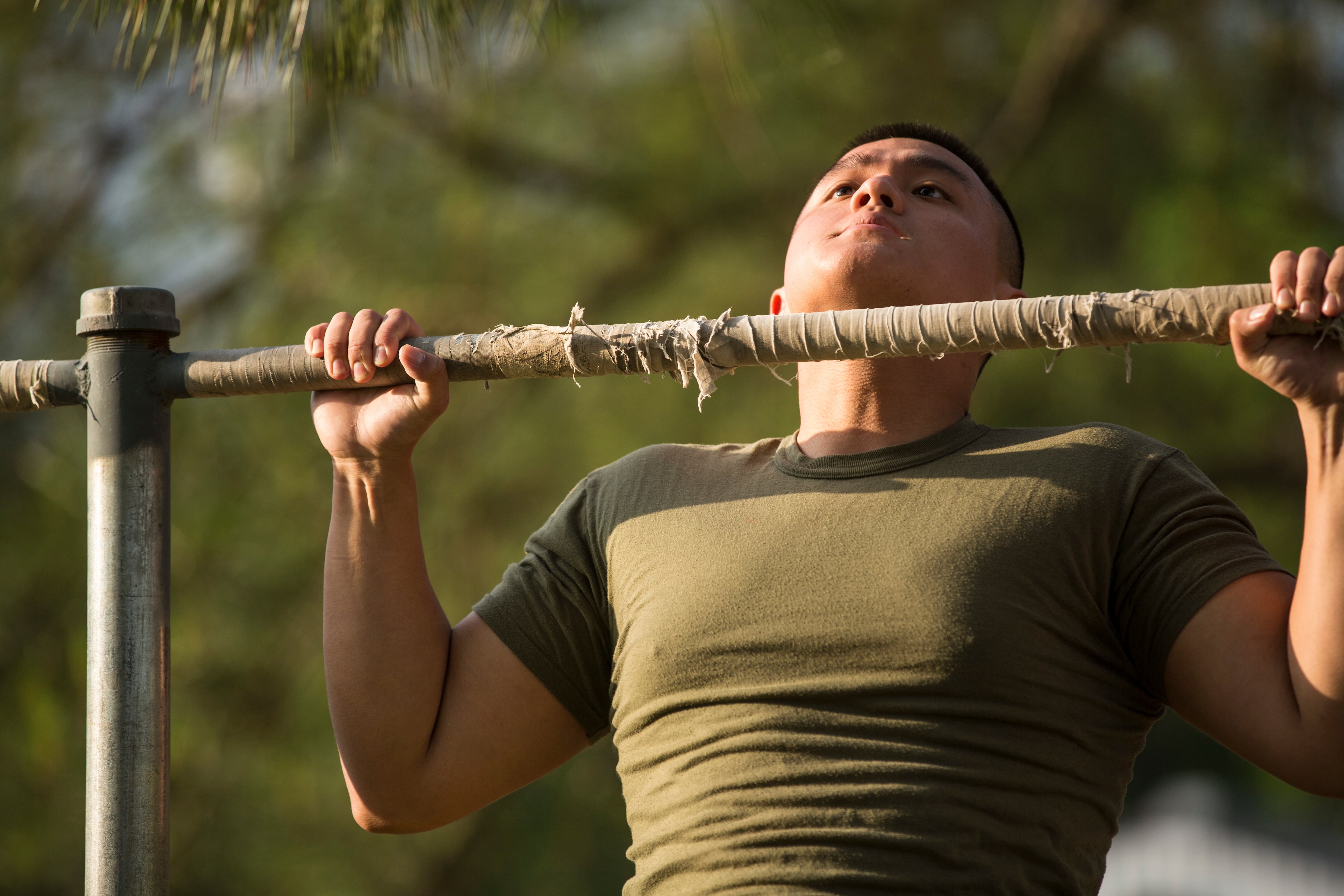Two years after the publication of a wide-ranging independent study on best practices for integrating men and women at Marine Corps boot camp, the service has yet to implement a key recommendation: integrating the genders at the platoon level in training.
But researchers say certain findings about how to test and build fitness for injury prevention may work their way into future service protocols.
The 700-page, $2 million study, commissioned by the Marine Corps and completed by the University of Pittsburgh, was completed in summer 2022 and released to Military Times several months later in response to a Freedom of Information Act request.
This summer, after a lengthy publication review process, the study’s key findings were published in a special issue of the journal Military Medicine.
RELATED

One major observation that emerges — applicable to both genders — is the value of testing “explosive strength” to assess overall fitness and predict future military performance.
In the recruit training study, which involved 584 volunteer Marine recruits — 183 female, 401 male — at Marine Corps Recruit Depots Parris Island, South Carolina, and San Diego, researchers collected “baseline data” on factors they believed might predict attrition or injury before tracking the recruits through training.
One risk factor researchers quickly pinpointed isn’t terribly surprising: cigarette smoking. In the population studied, smokers were over 110% more likely to drop out of training than non-smokers.
And this contrast may be about more than the effects of smoke on young recruits’ lungs; researchers said smoking may be a top-off to other behavioral or psychosocial factors, “such as risk taking or resistance to authority.”
The other major finding researchers identified is specific to physical training: a major predictor of training injury and attrition was reduced muscular power and lower relative peaks in explosive strength.
The Pittsburgh team studied these factors by applying a pair of physical tests at the start of the research period. The first of these tests was a “countermovement jump,” in which participants placed their hands on their hips and attempted to jump “as high and fast as possible” for three peak efforts in a row.
Their efforts were judged not only in the height achieved in the jumps, but also in relative peak power and force of deceleration, assessed by software readings from “force plates” recruits stood on during the exercise.
The second test was an “isometric mid-thigh pull,” also done on top of the force plates. For this test, recruits were told to grip a steel testing apparatus simulating a heavy weight and “pull as hard and fast as possible” for five seconds at a time. After warmups and familiarization, recruits performed this test for two reps.
Notably, these tests do not precisely replicate anything in the existing standard Marine Corps fitness assessments. The Marine Corps physical fitness test includes pushups or pullups; planks for time; and a three-mile run or equivalent rowing session.
The service’s combat fitness test, meanwhile, contains more power and agility elements, including maximum reps on lifting a 30-pound ammunition can and a maneuver-under-fire event with a shuttle run, grenade throw and agility course in addition to a half-mile run in battle dress uniform.
Ahead of boot camp, under current standards, Marines must pass an “initial strength test” that more closely resembles the PFT. They perform maximum-repetition pull-ups or push-ups, crunches or planks, and a 1.5-mile run. Ammo can lifts are added for recruits planning to enter a ground combat military occupational specialty.
Though the jump and pull tests introduced by the Pittsburgh team are not as physically depleting as the Marines’ current assessment battery, researchers found the exercises to be highly predictive of injuries and attrition.
A recruit whose peak power was lower and who had a shorter deceleration period was more likely to sustain a lower-extremity injury in training, they found.
Conversely, for each “unit increase” in peak power, likelihood of injury went down more than 8%. Recruits who took longer to reach peak force and less time to decelerate were more likely to drop out of training at a rate of 2% per each unit change, they found.
Notably, the research also confirmed that subjects’ performance on these tests can improve with training.
While female recruits are still significantly more likely to sustain musculoskeletal injuries, or MSIs, than their male counterparts, it remains a Corps-wide problem. The study found these injuries are estimated to cost the Corps $111 million and 356,000 lost duty days each year.
“We advocate for neuromuscular training programs to bolster strength and power, integrated nutrition and exercise strategies for optimal body composition, and support for smoking cessation to alleviate the incidence of MSIs and curtail attrition,” the study concluded. “Effectively addressing these risk factors is pivotal for diminishing the rates of MSIs and attrition among recruits, thereby enhancing overall military readiness and operational efficiency.”
In a September round-table interview with the study’s authors, Bradley Nindl, director of the University of Pittsburgh’s Neuromuscular Research Laboratory/Warrior Human Performance Research Center, said he believed the explosive-movements tests could be adapted away from the sophisticated pressure-plate setup so they could be performed anywhere.
“At the end of the day, it’s something that you can take from the laboratory to the field,” he said. “So, I do think you’ll see more and more studies for the military, specifically, assessing performance using these two technologies.”
Karl Friedl, a senior research scientist at the U.S. Army Research Institute of Environmental Medicine and a guest editor on the study, gave credit to the Corps for incorporating lifting, carrying and pull-ups, all of which require musculoskeletal power, in their existing fitness evaluations. He said further expansion of explosive-strength assessments may already be in the works.
“The Marines are actually considering some kind of jump test that Marines might be able to do on a regular basis voluntarily and track on their own, to track their fitness over their whole career,” he said. “They’re still considering those sorts of technologies they’re always looking for.”
A spokesman for Marine Corps Training and Education Command, however, said not to expect any near-term changes to the Corps’ standard tests.
“No changes are planned for the PFT or CFT,” Maj. Hector Infante told Marine Corps Times. “Jump exercises and other power development exercises do occur in entry level training and at other parts of the training and education continuum and have for some time.”
That said, he indicated the strength concepts highlighted by the study are already making their way into less visible aspects of recruit training.
“USMC human performance policies and programs are in a constant state of analysis, assessment, and modification if warranted,” Infante said. “UPitt’s recommendations to enhance the sequencing of training progression in terms of frequency, duration, intensity, and timing have been incorporated into entry level training.”





